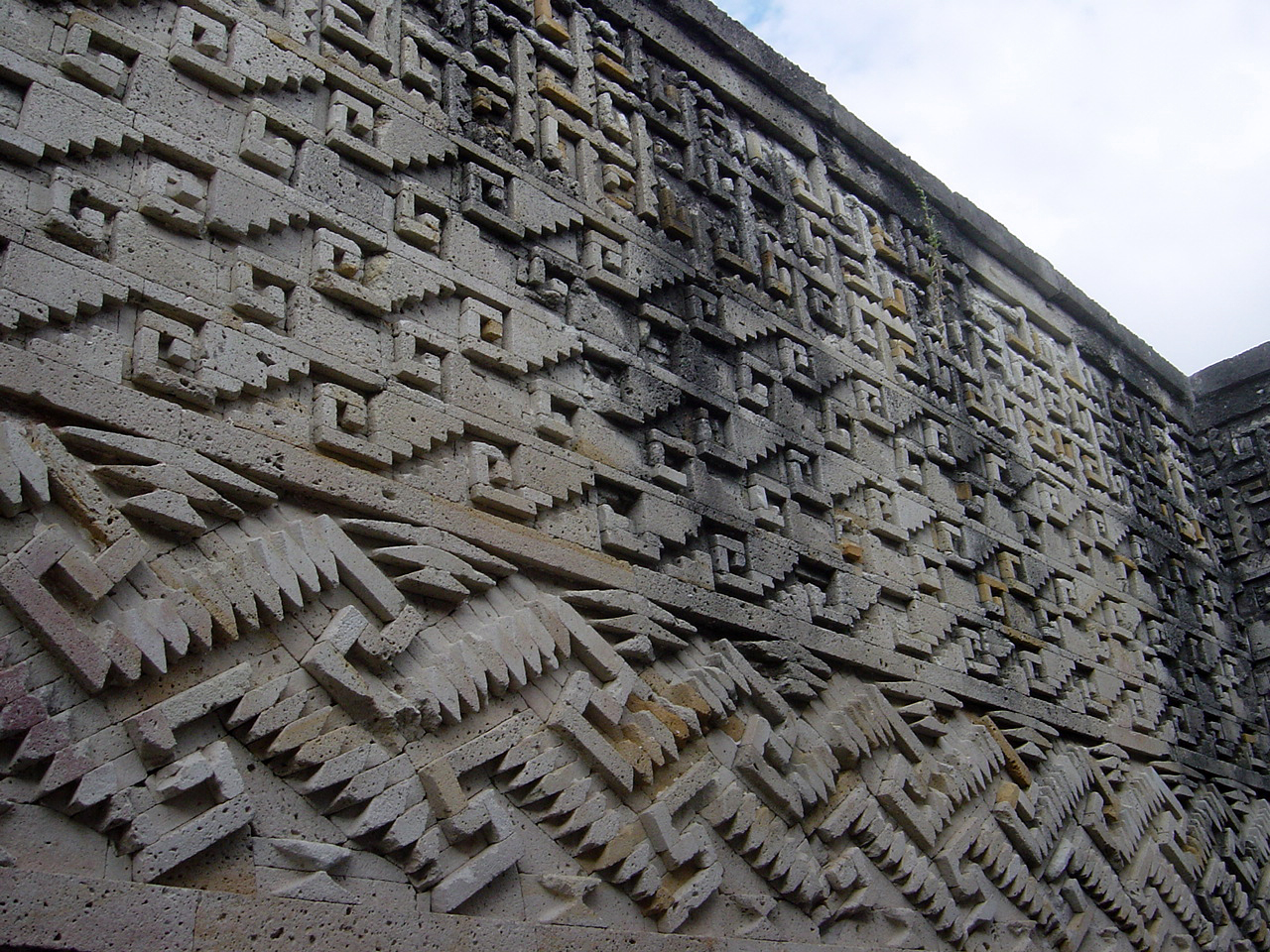Xicalcoliuhqui Chimalli on:
[Wikipedia]
[Google]
[Amazon]
 Xicalcoliuhqui (also referred to as a "step fret" or "stepped fret" design and ''greca'' in Spanish) is a common motif in
Xicalcoliuhqui (also referred to as a "step fret" or "stepped fret" design and ''greca'' in Spanish) is a common motif in 
 ''Xicalcoliuhqui chimalli'', are shields featuring a single iteration of the stepped fret motif which were painted or covered with featherwork. They are depicted frequently in the
''Xicalcoliuhqui chimalli'', are shields featuring a single iteration of the stepped fret motif which were painted or covered with featherwork. They are depicted frequently in the
 The xicalcoliuhqui motif appears in embellishments on temples and other buildings at archaeological sites around Mexico.
* The xicalcoliuhqui motif is featured on either side of the staircase on The Pyramid of the Niches at the Veracruz site of
The xicalcoliuhqui motif appears in embellishments on temples and other buildings at archaeological sites around Mexico.
* The xicalcoliuhqui motif is featured on either side of the staircase on The Pyramid of the Niches at the Veracruz site of
 Xicalcoliuhqui (also referred to as a "step fret" or "stepped fret" design and ''greca'' in Spanish) is a common motif in
Xicalcoliuhqui (also referred to as a "step fret" or "stepped fret" design and ''greca'' in Spanish) is a common motif in Mesoamerica
Mesoamerica is a historical region and cultural area in southern North America and most of Central America. It extends from approximately central Mexico through Belize, Guatemala, El Salvador, Honduras, Nicaragua, and northern Costa Rica. W ...
n art. It is composed of three or more steps connected to a hook or spiral, reminiscent of a "greek-key" meander
A meander is one of a series of regular sinuous curves in the channel of a river or other watercourse. It is produced as a watercourse erodes the sediments of an outer, concave bank ( cut bank) and deposits sediments on an inner, convex bank ...
. Pre-Columbian examples may be found on everything from jewelry, masks, ceramics, sculpture, textiles and featherwork to painted murals, codices and architectural elements of buildings. The motif has been in continual use from the pre-Columbian era to the present.

Connotations
The word ''xicalcoliuhqui'' () means "twisted gourd" (''xical''- "gourdbowl" and ''coliuhqui'' "twisted") inNahuatl
Nahuatl (; ), Aztec, or Mexicano is a language or, by some definitions, a group of languages of the Uto-Aztecan language family. Varieties of Nahuatl are spoken by about Nahua peoples, most of whom live mainly in Central Mexico and have smaller ...
. The motif is associated with many ideas, and is variously thought to depict water, waves, clouds, lightning, a serpent or serpent-deity like the mythological fire or feathered serpents, as well as more philosophical ideas like cyclical movement, or the life-giving connection between the light of the sun and the earth, and it may have been a protection against death, but no single meaning is universally accepted. It is also possible that the motif represents the cut conch shell
Conch () is a common name of a number of different medium-to-large-sized sea snail, sea snails. Conch shells typically have a high Spire (mollusc), spire and a noticeable siphonal canal (in other words, the shell comes to a noticeable point a ...
which is an emblem of Ehecatl
Ehecatl ( nci-IPA, Ehēcatl, eʔˈeːkatɬ, ) is a pre-Columbian deity associated with the wind, who features in Aztec mythology and the mythologies of other cultures from the central Mexico region of Mesoamerica. He is most usually interpreted as ...
, the wind god, an aspect of Quetzalcoatl
Quetzalcoatl (, ; Spanish: ''Quetzalcóatl'' ; nci-IPA, Quetzalcōātl, ket͡saɬˈkoːaːt͡ɬ (Modern Nahuatl pronunciation), in honorific form: ''Quetzalcōātzin'') is a deity in Aztec culture and literature whose name comes from the Nahu ...
. It seems likely that the multivalent nature of the symbol gave rise to its potency and longevity.
Xicalcoliuhqui chimalli, the stepped-fret shield
 ''Xicalcoliuhqui chimalli'', are shields featuring a single iteration of the stepped fret motif which were painted or covered with featherwork. They are depicted frequently in the
''Xicalcoliuhqui chimalli'', are shields featuring a single iteration of the stepped fret motif which were painted or covered with featherwork. They are depicted frequently in the Codex Mendoza
The Codex Mendoza is an Aztec codex, believed to have been created around the year 1541. It contains a history of both the Aztec rulers and their conquests as well as a description of the daily life of pre-conquest Aztec society. The codex is wri ...
, and many other central Mexican codices, usually with the xicalcoliuhqui design shown in yellow and green.
Architectural embellishments
El Tajín
El Tajín is a pre-Columbian archeological site in southern Mexico and is one of the largest and most important cities of the Mesoamerican chronology, Classic era of Mesoamerica. A part of the Classic Veracruz culture, El Tajín flourished from ...
.
* The stone mosaic fretwork at Mitla
Mitla is the second-most important archeological site in the state of Oaxaca in Mexico, and the most important of the Zapotec culture. The site is located 44 km from the city of Oaxaca, in the upper end of the Tlacolula Valley, one of the t ...
, a Zapotec site in Oaxaca, display many variations on the xicalcoliuhqui motif.
References
Gallery
{{Portal bar, Mesoamerica, Visual Arts, History, Art Mesoamerican art Pre-Columbian art Indigenous art of the Americas Visual motifs